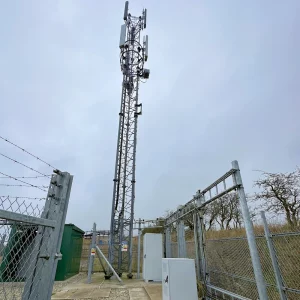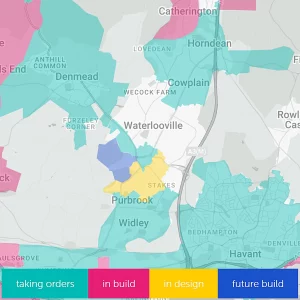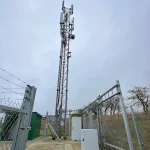Sponsored Links
UPDATE Powernet UK Launch Low Cost and Low Latency VoIP Phone Calls Product
Posted: 15th Mar, 2011 By: MarkJ
 Business broadband ISP Powernet has launched a new IP telephony ( VoIP ) solution, ViBE, which claims to allow at least 60 concurrent business quality calls over an average UK ADSL internet access connection.
Business broadband ISP Powernet has launched a new IP telephony ( VoIP ) solution, ViBE, which claims to allow at least 60 concurrent business quality calls over an average UK ADSL internet access connection.The new technology uses bandwidth optimisation to remove the Quality of Service (QoS) problems that have often been associated with VoIP implementations. It also claims to have slashed connectivity costs and thus offers businesses an affordable solution.
Tony Tugulu, CEO of Powernet, said:
"VoIP often gets a bad press in the business community as too many providers are offering a service that is unreliable, absurdly limited in concurrent users or prohibitively expensive. ViBE is a real game changer because it resolves these issues in a single stroke, leading to dramatic cost savings, increased convenience and reliability."
"VoIP often gets a bad press in the business community as too many providers are offering a service that is unreliable, absurdly limited in concurrent users or prohibitively expensive. ViBE is a real game changer because it resolves these issues in a single stroke, leading to dramatic cost savings, increased convenience and reliability."
Furthermore Powernet claims that ViBE's method of giving priority to voice packets, which can apparently work over any kind of connection ( ADSL , Ethernet , Satellite or even Mobile Broadband ), is able to maintaining optimum voice quality through multiple concurrent calls and without "any compromise to data transfer rates".
That sounds somewhat improbable as VoIP calls do still consume bandwidth, with any consumption able to impact the connections overall performance. We also note that Powernet does not define what "an average UK ADSL connection" actually is.
ViBE's three key benefits to business users:It would be interesting to see how ViBE manages to get a Satellite broadband link, especially given that the best that most two-way satellites' tend to achieve is around 200-300ms because of physical distance limits. We suspect that the above benefit is thus based off a fixed line connection.
Quality of Service – With traditional VoIP, it’s not uncommon to see jitter and latency approaching 100ms, causing delays and interruptions even with only one call. By contrast, ViBE sees the number reduced to around the 5ms mark, becoming effectively zero in good conditions.
Redundancy - ViBE can bond multiple lines together. The redundancy guarantees that if one line fails then the call may still continue uninterrupted using the other connection, almost entirely eliminates the possibility of dropped calls.
Analytics - ViBE monitors your connection without any interference or impact on traffic, giving you up-to-date information regarding performance and uptime.
UPDATE 23rd March 2011
Adam Hill, Head of technology at Powernet, has put together the following Q&A to shed some more light on ViBE.
* What's the actual impact of ViBE on simultaneous data transfer?
Each G.729 call reduces data throughput by just over 8kbit/s when using ViBE, though you get up to 30% more throughput on the link overall which negates some of that.
* Powernet does not define what "an average UK ADSL connection actually is".
The UK average is 768kbit - our measure of 60 simultaneous calls was for a link with 700kbit/s upstream.
* How does ViBE perform over Satellite
The underlying latency of a satellite link is unavoidable - however, the same benefits are available as for other link types, i.e. jitter is reduced to minimal levels and calls use bandwidth much more efficiently.
Search ISP News
Search ISP Listings
Search ISP Reviews
Latest UK ISP News








Cheap BIG ISPs for 100Mbps+
150,000+ Customers | View More ISPs
Cheapest ISPs for 100Mbps+
Modest Availability | View More ISPs
Latest UK ISP News
Helpful ISP Guides and Tips
Sponsored Links
The Top 15 Category Tags
- FTTP (6799)
- BT (3881)
- Politics (3075)
- Business (2767)
- Openreach (2663)
- Building Digital UK (2512)
- Mobile Broadband (2475)
- FTTC (2142)
- Statistics (2128)
- 4G (2092)
- Virgin Media (2024)
- Ofcom Regulation (1779)
- 5G (1732)
- Fibre Optic (1604)
- Wireless Internet (1595)
Sponsored
Copyright © 1999 to Present - ISPreview.co.uk - All Rights Reserved - Terms , Privacy and Cookie Policy , Links , Website Rules






























